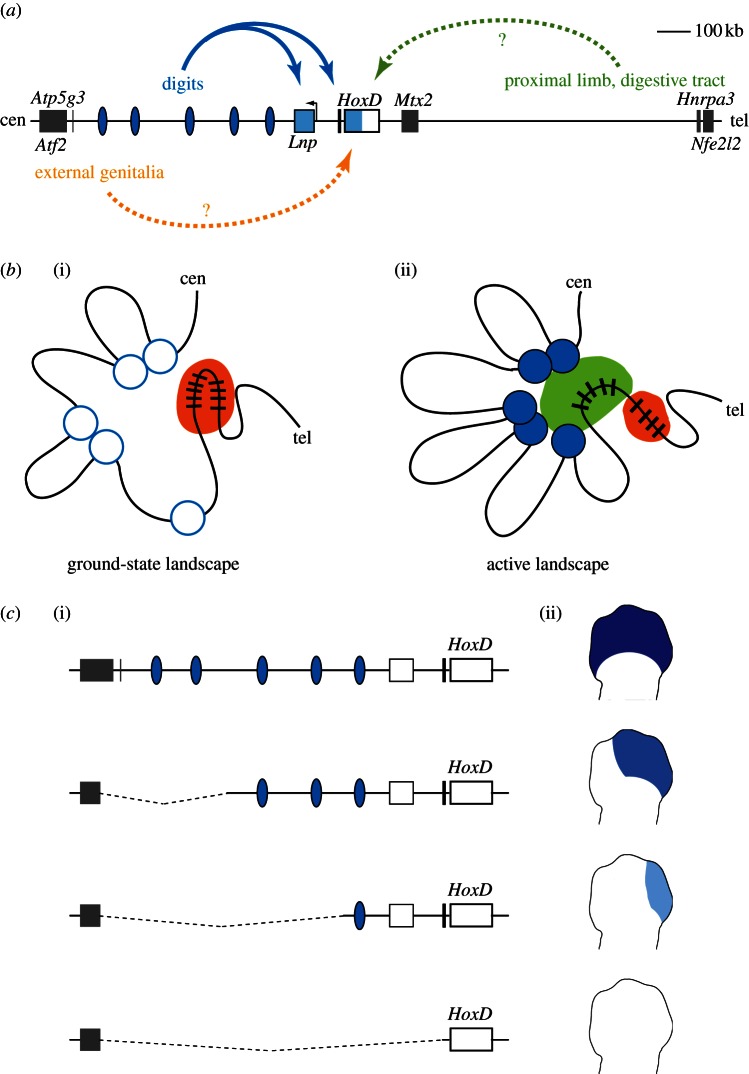Figure 2.
Long-range control and regulatory archipelagos. The coordinated transcription of Hox genes in different embryonic territories relies on remote regulatory elements located on either sides of the cluster. (a) Map of the HoxD locus and its flanking centromeric (cen) and telomeric (tel) conserved gene deserts. Multiple regulatory islands (blue ovals) participate in Hoxd13–Hoxd10 regulation in developing digits (blue arrow). Hoxd gene activation in other embryonic structures also relies on long-range controls, yet the corresponding regulatory elements have not yet been identified (dashed arrows). (b) Spatial conformation of the locus. (i) In the silent state, a ground-state structure is formed, involving contacts between a subset of the regulatory elements and the HoxD cluster. (ii) In digits, additional contacts are formed, leading to a fully active conformation paralleled with histone modifications at the regulatory elements, and leading to Hox genes transcriptional activation. (c) Robustness of regulatory archipelagos. Different genetic configurations of the locus are shown in (i), with a scheme of the resulting Hox gene expression in developing limbs in (ii). The wild-type situation is depicted on top, and serial deletions within the archipelago are indicated below. Deleting subsets of the regulatory islands leads to partial downregulation of Hoxd genes in distal limbs, and only a full deletion of the regulatory interval fully abolishes transcription.

